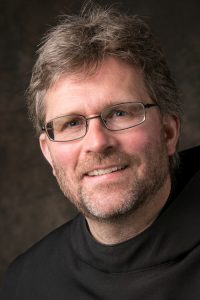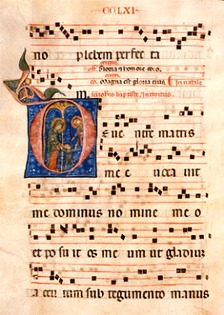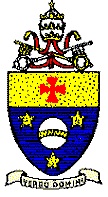May God grant him the graces needed to fulfill his person and work.
But with all this very good work done by the Primate and his staff, there’s much work to do. Not all is complete and Abbot Notker can’t rest on his laurels. Several things, in my considered opinion need attention: getting name recognition of Sant’Anselmo better known, especially in the USA, the greater cultivation of benefactors, the attraction of new monks, nuns and laity to teach at the Anselmo, to develop more dynamic programing in the constituent academic areas, to attract talented people –not necessarily monks, perhaps the utilization of the Oblates– to work there. Plus, it is reasonable to say that he and his staff ought to use technology much better to communicate with the world’s monks and nuns but also with the laity. There are a great amount of Oblates who love the love the Benedictine way of life and would appreciate being included more for the effective advancement of what is proposed by the Rule and the Church. It is disappointing that the Confederation doesn’t use technology viz. the Primate’s office and the school. The Curial offices on the Aventine Hill don’t need to feed the media monster but they do need to communicate more effectively using the internet, especially in the renewed emphasis the Church has placed on the proclamation of the Word of God. For example, the OSB website, Wikipedia and Confederation websites need a serious overhaul. Perhaps doing more work with the interface of monasticism and evangelization would be good as well as forming an international group of Oblates to live, work and pray as a community for the good of the Confederation.
Abbot Wolf can’t do this work all alone and in a short amount of time. He is 72 with realistically a term to work as Primate (4 years is not a long time). Abbot Notker needs our sincere prayer, fraternal and financial support.
On the Confederation, etc.
“The Benedictine Confederation was formed those monastic Congregations which, while preserving their autonomy, entered the union sanctioned by Pope Leo XIII in a the Papal Brief “Summum semper” and regularly approved by all of his successors. By order of Pope Pius XII precise legal prescision was made for this union in a Lex propria which was reviewed after the Second Vatican Council (1),”
The Benedictine Confederation was constituted and continues to exist in order that led by the Gospels, under the guidance of the Holy Spirit and directed by the Church, monastic life according to the Rule of Saint Benedict and the wise traditions of each Congregation and monastery adapted to the conditions of time and place may be fostered and fraternal assistance between Congregations in the areas of personnel, goods and works be encouraged in every way” (16).
“The Congress is not intended to be a Chapter General nor does it possess any power at variance with the autonomy of the Congregations or of monasteries; rather it serves the good of the Confederation with the limits described above (nos. 16-17)” (20).
All Benedictine saints and blesseds, pray for Abbot Notker, the Benedictine curia, and for us.











